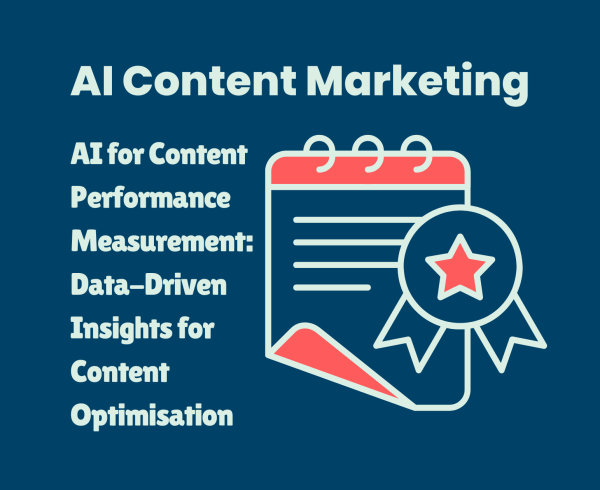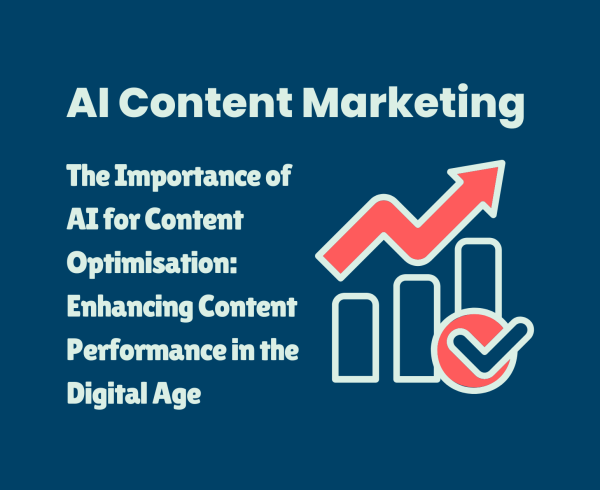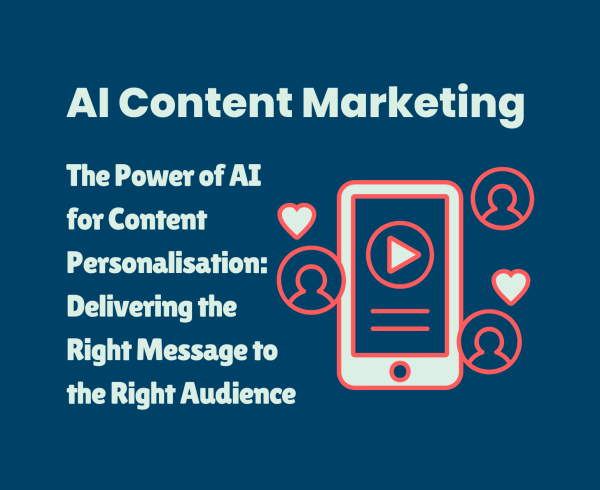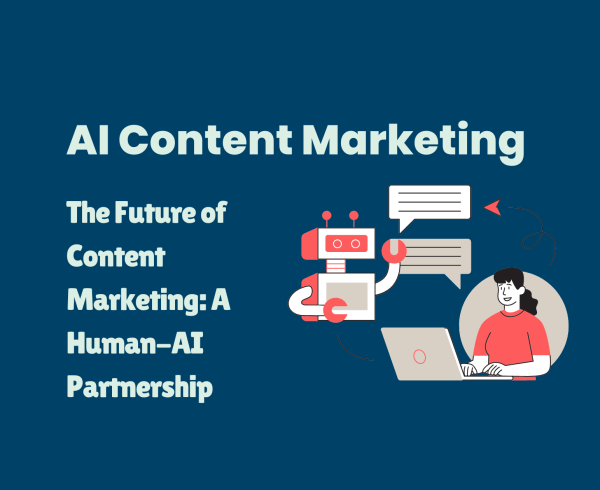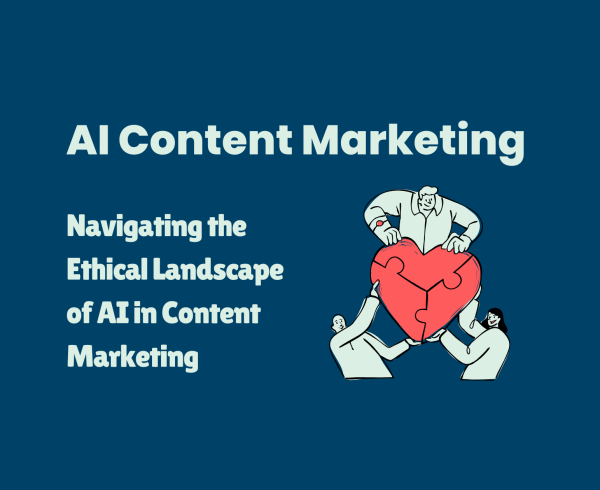Creating high-quality content is only half the battle in content marketing. To truly succeed, marketers need to ensure their content reaches the right audience at the right time through the most effective channels. In today’s fragmented digital landscape, content distribution can be a complex and challenging task. AI offers a powerful toolkit for optimizing content distribution, enabling marketers to expand their reach, increase engagement, and achieve their marketing goals. This article explores the challenges of content distribution in the digital age, delves into AI’s capabilities, and provides a roadmap for implementation.
- The Challenges of Content Distribution in the Digital Age
The digital landscape is constantly evolving, presenting new challenges for content distribution. Marketers need to navigate a complex web of channels, platforms, and audience preferences to ensure their content gets seen and heard.
Key Challenges:
- Content Overload: The sheer volume of content being produced makes it difficult to stand out and capture audience attention.
- Platform Proliferation: The proliferation of digital platforms and channels makes it challenging to determine where to focus distribution efforts.
- Audience Fragmentation: Audiences are increasingly fragmented across different platforms and devices, making it difficult to reach everyone with a single distribution strategy.
- Algorithm Changes: Algorithm changes on social media and search engines can impact content visibility and reach, requiring marketers to adapt their strategies.
- Measuring Effectiveness: Measuring the effectiveness of content distribution across different channels can be complex and time-consuming.
- How AI Can Help with Content Distribution
AI empowers marketers to overcome these challenges by analyzing data, automating processes, and personalizing content delivery. AI algorithms can:
- Analyze Audience Data: AI analyzes audience data, such as demographics, interests, behavior, and preferences, to identify the optimal channels and times to reach the right audience.
- Optimize Content for Different Channels: AI optimizes content for different channels and platforms, ensuring that content is formatted and delivered in a way that maximizes reach and engagement.
- Automate Content Distribution: AI automates the content distribution process, making it easier for marketers to share their content across various channels and platforms.
- Personalize Content Delivery: AI personalizes content delivery, ensuring that users receive content that is relevant to their interests and preferences.
- Measure Content Distribution Effectiveness: AI provides insights into the performance of content distribution across different channels, allowing marketers to measure effectiveness and make data-driven decisions.
- AI for Content Distribution on Social Media
AI enhances social media content distribution by optimizing content for different platforms, automating publishing, and personalizing delivery.
- Social Media Analytics: AI analyzes social media data, such as engagement rates, reach, and sentiment, to identify the best times to post and the most effective content formats for each platform.
- Content Scheduling and Publishing: AI automates content scheduling and publishing, ensuring that content is shared at the optimal times for maximum visibility and engagement.
- Social Media Advertising: AI optimizes social media advertising campaigns by targeting the right audience, adjusting bids, and personalizing ad creatives.
- Social Listening: AI monitors social media conversations and identifies relevant trends and insights, helping marketers create and distribute content that resonates with their audience.
- Influencer Marketing: AI identifies relevant influencers and measures the effectiveness of influencer marketing campaigns, helping marketers expand their reach and credibility.
Examples: Sprout Social, Hootsuite, and Buffer are social media management tools that utilize AI for content distribution.
- AI for Content Distribution via Email
AI optimizes email content distribution by personalizing content, optimizing send times, and improving deliverability.
- Email Personalization: AI personalizes email content, such as subject lines, body copy, and offers, based on user preferences and behavior, increasing open rates and click-through rates.
- Send Time Optimization: AI predicts the optimal times to send emails to each user, maximizing open rates and click-through rates.
- Subject Line Optimization: AI analyzes subject line performance and provides suggestions for improvement to increase open rates.
- Email Deliverability: AI can improve email deliverability by identifying and addressing potential issues, such as spam triggers and bounces.
- Email Segmentation: AI segments email lists based on user characteristics and behavior, allowing for targeted content delivery and improved engagement.
Examples: Mailchimp, Constant Contact, and ActiveCampaign are email marketing platforms that leverage AI for content distribution.
- AI for Content Distribution through Paid Advertising
AI optimizes paid advertising content distribution by targeting the right audience, adjusting bids, and personalizing ad creatives.
- Audience Targeting: AI analyzes user data to identify the most relevant audience segments for paid advertising campaigns, ensuring that content reaches the right people.
- Bid Optimization: AI adjusts bids in real-time to maximize ad performance and return on ad spend (ROAS), ensuring that content is distributed efficiently.
- Ad Creative Optimization: AI personalizes ad creatives, such as headlines, images, and calls to action, based on user characteristics and behavior, increasing engagement and click-through rates.
- Landing Page Optimization: AI analyzes landing page performance and provides suggestions for improvement to increase conversion rates, ensuring that distributed content leads to desired actions.
- Ad Fraud Detection: AI can detect and prevent ad fraud, protecting advertisers from wasted ad spend and ensuring that content reaches real users.
Examples: Google Ads, Facebook Ads, and LinkedIn Ads all utilize AI for content distribution.
- AI for Content Distribution via Influencer Marketing
AI enhances influencer marketing content distribution by identifying relevant influencers, measuring campaign effectiveness, and personalizing outreach.
- Influencer Identification: AI identifies relevant influencers based on audience demographics, interests, and engagement, ensuring that content reaches the right influencers for maximum impact.
- Campaign Measurement: AI tracks the performance of influencer marketing campaigns, measuring reach, engagement, and conversions, allowing marketers to optimize their strategies.
- Personalized Outreach: AI personalizes influencer outreach, tailoring messages and offers to individual influencers, increasing the likelihood of collaboration.
- Fraud Detection: AI can detect fake influencers and fraudulent activities, protecting marketers from ineffective campaigns and wasted resources.
- Relationship Management: AI can help manage influencer relationships by tracking communication, scheduling content, and providing performance reports.
Examples: Upfluence, Grin, and AspireIQ are influencer marketing platforms that leverage AI for content distribution.
- AI for Content Distribution via Content Syndication
AI optimizes content syndication by identifying relevant platforms, automating content submission, and tracking performance.
- Platform Identification: AI identifies relevant content syndication platforms based on audience demographics, interests, and content type, ensuring that content reaches the right audiences.
- Content Submission: AI automates content submission to syndication platforms, saving marketers time and effort.
- Performance Tracking: AI tracks the performance of syndicated content, measuring reach, engagement, and conversions, allowing marketers to optimize their syndication strategy.
- Content Optimization: AI optimizes content for different syndication platforms, ensuring that content is formatted and delivered in a way that maximizes visibility and engagement.
- Content Repurposing: AI can repurpose existing content for different syndication platforms, expanding the reach and impact of content assets.
Examples: Outbrain, Taboola, and Zemanta are content syndication platforms that utilize AI to optimize content distribution.
- AI for Content Distribution via Content Recommendation Engines
AI powers content recommendation engines that suggest relevant content to users, increasing engagement and discovery.
- Personalized Recommendations: AI analyzes user data to provide personalized content recommendations, ensuring that users see content that is relevant to their interests and preferences.
- Content Discovery: AI helps users discover new content they might enjoy, expanding their content consumption and increasing engagement.
- Content Filtering: AI filters out irrelevant or low-quality content, ensuring that users see only the most relevant and engaging content.
- Content Ranking: AI ranks content based on relevance, popularity, and other factors, ensuring that the most valuable content is surfaced to users.
- Content Personalization: AI personalizes the content recommendation experience, tailoring recommendations to individual users based on their characteristics and behavior.
Examples: Netflix, Spotify, Amazon, and YouTube all use AI-powered content recommendation engines to distribute content.
- The Future of AI for Content Distribution
The future of AI for content distribution is promising, with advancements in AI technology promising even more sophisticated and impactful distribution capabilities.
- Hyper-personalization: AI will enable even more granular personalization of content distribution, tailoring content delivery to individual needs and preferences in real-time.
- Predictive Distribution: AI will predict content performance and user behavior, enabling proactive content distribution and maximizing content ROI.
- Automated Distribution: AI will automate more aspects of content distribution, freeing up marketers to focus on strategic initiatives.
- Multi-Channel Optimization: AI will optimize content distribution across multiple channels and platforms, ensuring a consistent and effective content experience across all touchpoints.
- Case Studies in AI-Powered Content Distribution
Numerous companies are achieving remarkable results with AI-powered content distribution. Here are a few examples:
- BuzzFeed: BuzzFeed uses AI to personalize content recommendations, optimize content for social media, and distribute content through various channels, reaching a massive audience.
- The New York Times: The New York Times uses AI to personalize content recommendations, optimize email newsletters, and distribute content through social media and other channels, increasing engagement and subscriptions.
- Netflix: Netflix’s AI-powered recommendation engine is a key driver of user engagement and retention, personalizing content suggestions and driving content discovery.
Conclusion
AI is transforming content distribution, providing marketers with the tools and insights to reach the right audience at the right time through the most effective channels. By leveraging AI’s capabilities, marketers can overcome the challenges of content distribution in the digital age, expand their reach, increase engagement, and achieve their marketing goals. As AI technology continues to evolve, the future of content distribution is full of promise and potential. Companies that embrace AI and adopt a human-AI collaborative approach to content distribution will be well-positioned to thrive in the future of content marketing.


